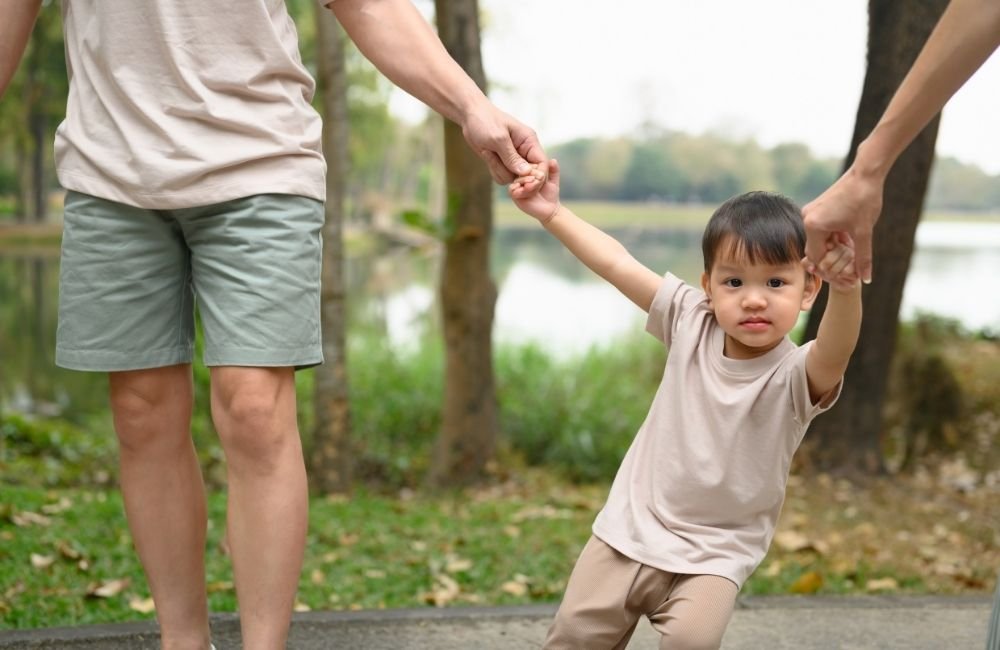How to Help Son with Anxiety?: Ways to Talk, Listen and Comfort

As a mom of two, I will never forget the day when my youngest one came from school and was trembling with anxiety. “Mom, I’m scared. What if I mess up the presentation? What if my friends think I’m not cool anymore? My heart broke for him. Nowadays, nearly 1 in 3 children face anxiety, which is a significant rise that no one can overlook. Are you one of those moms distressed about how to help son with anxiety? It’s essential to address anxiety head-on so we can help children build resilience and emotional strength to deal with life’s uncertainties with confidence. Let’s get into the blog to learn effective ways to talk, listen and comfort our children.
What’s “Normal” vs. Anxiety Disorders?
It is also essential to differentiate between usual childhood fears and anxiety disorders. Many children go through common fears like fear of the dark or thunderstorms. . Fear transforms into disruptive anxiety, affecting daily activities, social interactions, and academic performance.
There are the following triggers to watch for:
School Stress
Academic pressures, test anxiety and concerns about performance can create a significant burden.
Social Dynamics
Peer relationships, bullying or feeling left out can contribute to sharp anxiety.
Family Changes
Events such as divorce, relocation or the arrival of new sibling can disrupt a child’s sense of stability.
Global events
Global events such as scenes of pandemics or cyclones can impact children and make them feel a little more thoughtful.
How to Talk to an Anxious Child?
Create a Safe Space
Creating a safe and comfortable environment is essential when talking to an anxious child. Use calm, open body language to convey your support and avoid rushed conversations that may add to their anxiety.
Example Phrases:
- I’m here to listen whenever you are ready.
- Take your time; I’m here for you.
Choosing Sympathetic Language
Use sympathetic language is important in helping children feel understood. How much it helps to validate their feelings to make a huge difference in dealing their anxiety.
Example of Sympathetic Language
- It’s okay to feel scared. Let’s figure this out together.
- I can see that this is really bothering you and that’s perfectly normal.
Ask Open-Ended Questions
When you encourage your child to talk about what they are thinking and feeling, it can be a good way to understand their anxiety. Open-ended questions also help them open up to share their experiences and promote deeper conversations.
Examples of Open-Ended Questions:
- How does your worry feel in your body?.
- Tell me more about what you’re thinking.
The Art of Listening to an Anxious Child
Practice Active Listening
Active listening is a superpower when you’re connecting with an anxious child. This means giving them your full attention when they do talk, resonating back how they’re feeling and taking an interest in their worries. It’s essential to not interrupt or jump to solutions, as safety and security often just need to be heard.
Notice Non-Verbal Prompts
Kids express their emotions using nonverbal signs. Noticing their body language can mirror their emotional state. Typical nonverbal signs are impatient behavior and turning away from someone, which can indicate a desire to have space. When you spot these signals, you slow down the conversation and offer the support they need.
What not to say
Certain phrases can unintentionally invalidate a child’s feelings to deal their anxiety. Being aware of what not to say is just as important as knowing how to comfort them.
Avoid following statements:
- “You are overacting”.
- “Your sister doesn’t get scared.”
Comforting Strategies for Anxious Moments
Grounding Techniques
Grounding techniques can be incredibly effective in helping children manage anxiety during overwhelming moments. These methods redirect their focus away from their worries and help them feel more present. Introduce calming breathing exercises such as “bubble breaths”. Have them imagine blowing bubbles as they slowly exhale through a bubble, focusing on their breath’s gentle rise and fall.
Routines as Anchors
Being consistent can be an anchor for anxious children. Having consistent schedules helps reduce uncertainty, which can make it easier for children to cope with their anxiety. Establish a schedule for the morning time for breakfast, getting ready and some calm time before school. Consider reading together, discussing your days or practicing mindfulness as part of a calming evening routine.
Co-Regulation
As a parent, your emotional state affects your child’s feelings. Co-regulation is the act of keeping yourself calm, and it helps your child settle. If your child is upset, use deep breathing or grounding techniques to get your anxiety under control. If children watch you stay calm, they will probably imitate that calm behavior to feel comfortable.
Supporting your child beyond conversation
Model Healthy Coping
One of the best things you can do as a parent to assist your anxious child is to model healthy coping strategies. Children do learn how their parents handle stress. How to help son with anxiety? This can be answered by doing a few things, such as just telling your child how you are coping. For example, you might say, “I am taking deep breaths to feel calm” or “I’m going for a walk to clear my mind. It normalizes the conversation around stress and shows them it’s okay to talk about their feelings.
Encourage Play and Creativity
Play and creative expression are essential for children’s emotional health. Both create a safe space for feeling, and this can guide children in how to experience and express their experiences. This is a great time to have your child draw or paint their feelings. Art can be a powerful way of verbalizing emotions that are otherwise hard to translate into words. Journaling, which is writing down their thoughts and feelings, can help children process their experiences and ease anxiety. How they might manage various social scenarios or practice responding to anxiety-provoking situations.
When to Seek Professional Help
Most children are anxious but some can benefit from extra help. It is essential to know when to seek professional help. If your child regularly avoids situations or places they previously enjoyed, it’s time to get help. Professional help can offer the tools an individual may use to manage if anxiety starts affecting their ability to function at school, in social settings or at home.
Final Thoughts
These are the best ways to manage the struggles of childhood anxiety. Providing a safe space for open communication and modeling healthy coping strategies will enable your child to feel their feelings, confront their fears, and take control of their emotions. As a parent, please share your experiences or insights on ways for parents on how to help son with anxiety so we can all create an environment where our kids feel safe and supported.

Aashley Kai is the Editorial Director of Chelsea Famous Parenting and a licensed expert in early childhood education. She holds a Master’s in Child Psychology from the University of Texas Southwestern Medical Center and has worked as a preschool teacher and child therapist. Since joining in 2024, Aashley has been dedicated to creating well-researched, trustworthy parenting resources. Her work helps parents and caregivers foster nurturing, educational environments for children. Outside of work, she enjoys hiking and photography, capturing nature from a child’s perspective.




